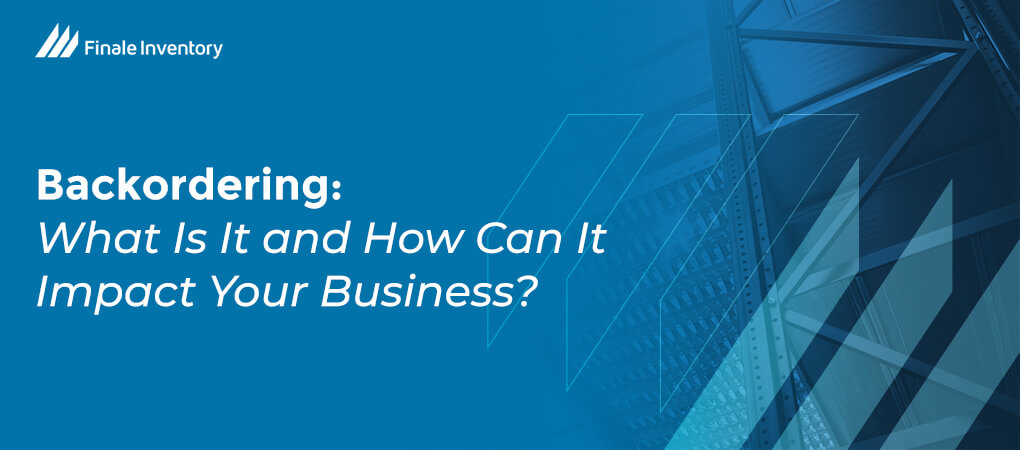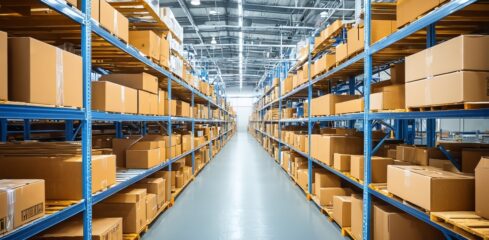Online retailers lose $22 billion annually when products go out of stock. One way to reduce those losses is to place an item on backlog. As a retailer, you may sometimes see this from your suppliers or consider using the strategy yourself. So, what does it mean when an item is on backorder? Under this scenario, customers can still place their orders while an item is out of stock. The seller promises to fulfill the order as soon as the items are replenished.
While customers will still have to wait, a backorder can be a valuable alternative to temporarily taking the item off the market. It can help retailers maintain sales and guarantee that they’ll sell the products they’re reordering. Of course, the ideal scenario is to prevent stock-outs and backorders altogether.
Understanding the backordering process can help your business manage it more effectively. A fully fleshed-out backorder management strategy can make your stock-outs go as smoothly as possible and prevent them wherever possible.
Backorder Meaning: What Are Backorders?
A backorder is a sales order that the company cannot fulfill due to an inventory shortage. A retailer may be facing a stock-out, while a manufacturer might have a supplier delay or have products in production but not yet ready to ship. In any case, when an item is backordered, demand outweighs supply.
Backlogging sales orders is one way to manage an out-of-stock scenario without taking down the listing. It allows a retailer to continue accepting new orders even while they cannot fulfill them. Often, the difference between items that are backordered vs. out of stock is a known timeline. An item on backorder will have a particular date by which you expect to have replenished stock. If there’s no such date, most retailers opt to mark the item as out of stock.
While it’s never ideal, backordering can help businesses maintain sales instead of canceling orders or halting sales. If you sell exclusive, high-value products, you might earn strong sales even while a product is on backorder. However, if customers can find the same item or a similar item through another seller, they’ll probably turn there instead.
Whether your store is the only source for a product or one of many, customers don’t like waiting. When you place an item on backorder, you risk customers losing patience and canceling their orders. You may also receive an uptick in customer service requests.
Backordering As an E-Commerce Strategy
What do items being backordered mean for your business? First, of all the inventory challenges you could face, backorders are a good problem to have. They are a sign that your marketing and demand generation are highly effective. And if your shoppers are willing to add their names to a waiting list, you’ve managed to cultivate some powerful customer loyalty.
Backlogging orders can even be an advantageous strategy. It’s similar to another popular e-commerce practice of preordering, which customers usually view favorably. It even helps to build anticipation. Like running a preorder, backordering can help you improve short-term cash flow and guarantee that you’ll sell the products you’re buying or producing. You can also save significant storage costs by selling products while out of stock. Through cross-docking or drop shipping, you can even have the products delivered without them ever taking up space in your storage facility.
If you accept backorders, you should be reasonably confident that an item will come back in stock soon. You also need to be transparent with customers on the expected timeline. A backlog is essentially a first-come, first-serve waiting list. It’s best to maintain a short order backlog that will be easy to chip away at once the items come back in stock. Letting your list get too long can create customer dissatisfaction.
Common Backorder Causes
Knowing what causes backorders can help you prevent them. Some of the top causes for order backlogs include:
1. Delaying Reorders
Without looking at objective data, deciding when to reorder stock can be a game of chance. Companies who reorder stock on a set schedule, like once a month, often do a final review before deciding whether to replenish. Sometimes, they make the wrong call and choose to delay reordering. Then, demand picks up, and suddenly they don’t have enough stock on hand to fulfill their orders.
Using a sophisticated, data-driven reordering process can significantly reduce this concern. Instead of reordering on a set schedule and deviating as needed, companies can reorder when stock gets low. Inventory management software like that from Finale Inventory can monitor your company’s available inventory in real time and send alerts when quantities dip into the buffer supply. The tool can also track sales velocity and incorporate it into a dynamic reorder point calculation. You’ll receive an alert when you need to restock based on your current demand, supplier lead times and your desired amount of safety stock.
2. Inaccurate Inventory Data
Reordering decisions are only as strong as the data they rely on. When a business sells on multiple channels, such as Amazon, eBay, their website and a physical location, data silos can crop up. If you have one set of inventory that feeds into each channel, you must reconcile all inventory data.
For example, when an order is placed on Amazon, other channels such as your website and your point-of-sale (POS) system need to be updated. Doing this by hand introduces mistakes. If you forget to subtract stock from one channel, your system will show that you have more inventory than you do. This could cause you to delay reordering and deplete your current supply until it goes on backorder.
Inventory management software eliminates this concern by tracking sales in real time across all sales channels. It can integrate with marketplaces, shopping cart applications, channel managers and POS systems. When a sale occurs anywhere, it subtracts from your global stock quantities and updates in every marketplace. With inventory management software, you’ll always have an accurate inventory count for 100% of your sales channels.
3. Human Errors
Some situations may cause you to mistakenly place a product on backorder when, in fact, you have it in stock. This can occur when one of your order pickers goes to retrieve merchandise for an order and cannot find it. In this case, they’ll mark the product as out of stock or place it on backorder. In reality, the products may have been moved, or the picker could have looked in the wrong location.
We recommend pairing automated inventory tracking with a barcode scanning stock management solution to reduce human error. Barcode readers will direct your order pickers to the correct storage location for every item. Whenever staff transfers stock, the barcode scanner guides them, so the new location is logged accurately. This reduces time spent hunting down missing stock and improves visibility.
4. Supply Chain Shortages
As a retailer, you may have several upstream suppliers that you have less control over. If your vendor or the manufacturer faces their own backorder, that shortage may eventually trickle downstream to you. Many factors in the global supply chain may be at play here. The delay could be localized to a particular factory because the power went out or machinery broke down. Or, maybe a natural disaster blocks access to certain raw materials, causing a global supply shortage that affects many manufacturers.
You can mitigate this risk with better supply chain management and a healthy supplier network. When one supplier is out of stock, you can quickly pivot to another vendor that you’ve pre-vetted. With this preplanning, you’ll face fewer delays since you won’t have to hunt for a reliable last-minute supplier. It’s also helpful to initiate open communications with your suppliers, so they can let you know early when they predict delays.
How Long Do Backorders Take?
In general, you should only place an item on backorder when you can establish a restocking timeline. The length of any one backorder will depend on the unique situations that caused it. If a shortage isn’t affecting your upstream suppliers, getting an item back in stock depends on your supplier’s lead time. After you discuss timelines with your supplier, you can place an item on backlog and list a delivery estimate for customers who wish to purchase the item.
If there’s a manufacturing or shipping delay further up in the supply chain, the timeline may be less predictable. The wait will depend on how long the backlog list gets — or rather, how long it was when you placed your order. The timeline may also shift with your industry’s production lead times. If a manufacturer can create the product in large quantities relatively easily, they can end a backorder quickly. For complicated jobs, like consumer electronics, medical devices or auto parts, the backorder may last longer.
Because many variables affect backorder timelines, they can last as short as a week or as long as several months. There’s no hard rule for the maximum time a backorder should take except for how long your customers are willing to wait. According to the Federal Trade Commission’s 16 CFR Part 435 rule, mail, internet and telephone sellers must ship out their products within their advertised time frame or, in the absence of a published timeline, within 30 days.
When you can’t meet that time limit, you’re required to get the buyer’s consent to delay shipping. Otherwise, you must issue a refund. Based on that rule, it’s best if you can keep your estimated time of arrival within 30 days.
How to Manage Backorder Requests
If you choose to place an item on backorder instead of temporarily out of stock, it is critical to act swiftly and manage expectations. Here are six steps for how to handle backorders effectively:
- Consider your restocking time frame: In some cases, you may be able to rush an order from a supplier or receive a regular shipment relatively quickly. If you can still ship products to customers by the far end of your delivery window, you may not need to place any items on backorder. If your supplier offers it, consider drop shipping to get orders out faster. Whenever you can avoid listing an item as backordered or out of stock, this is always the best option.
- Set a transparent deadline: Add an estimated arrival date to your website and online listings as soon as you realize an item is on backorder. Ensure your deadline is manageable on your end and worth the wait for customers. If any of your customers have ordered products that became backordered, notify them of the delay, and offer the option to wait, get refunded or exchange for something that’s still in stock.
- Wait to process payments until you can fulfill the order: Even when you manage the process perfectly, issues in your supply chain may be out of your control. It’s easier for you and your customer if you don’t have to issue a refund. Credit card companies may also have rules against charging a card for something that’s out of stock. In any case, it’s best to wait until you know you can fulfill the order to process the payment.
- Split shipments: If an order contains many items and only some are on backorder, ship the available products right away. Your inventory control and shipping software should accommodate a split shipment relatively easily. By shipping part of the order right away, you can keep customers satisfied. A partial shipment may also prevent some customers from canceling an order in the meantime.
- Make the wait worth it with a special offer: The risk when placing an item on backlog is that customers waiting for the backorder may find the item elsewhere and cancel their order. The long wait gives them plenty of time to change their mind. To prevent this, consider offering a discount, free shipping or something else they couldn’t get if they switched to another seller.
- Have customer service at the ready: An unexpected backorder may cause an influx of requests to your customer service department. Ensure customer service is easy to reach by phone, email, live chat and social media alike. Brief your customer service team on the expected delays, and ensure they can give honest answers to customers’ questions. Letting shoppers know why a product is delayed and what you’re doing to fix it can go a long way. Also, consider authorizing your team to issue discounts to affected customers.
How to Improve Backordering Practices
The way you handle the occasional backorder is central to your reputation as an e-commerce store. It’s even better if you can prevent the scenario altogether. Here are some backordering best practices and strategies to avoid or speed them along:
- Evaluate your inventory management system: If you’re facing backorders regularly, it may be time to change your inventory management practices. You may need to keep a larger quantity of safety stock or change your reordering process. Stock control software can use a dynamic reorder point formula that accounts for sales velocity to help you prevent stock-outs and backorders. Real-time alerts can ensure you won’t miss any critical reorder deadlines.
- Find backup suppliers: The shorter your suppliers’ lead times, the better prepared you are to manage the occasional backorder. If a stock-out results in a one-week or two-week delay, customers may be much more willing to wait than if it takes a month or more. Look at your supplier’s lead times and consider whether it’s time to find partners that offer shorter turnarounds. Start looking for these vendors now, even if you’ll only use them for backorders. You’ll appreciate having these suppliers vetted and ready to deliver when a stock-out strikes.
- Consider drop shipping: Suppliers that offer drop shipping can address packages directly to your customers. When shipments take the most direct route to the customer and don’t get processed at your facility, they can arrive much faster. Managing the occasional backorder with drop shipping can be an excellent timesaver.
- Save time with cross-docking: Cross-docking is another logistics strategy that can save you time when fulfilling backorders. When the backordered stock arrives in your receiving department, your team can pack the sales shipments right at the dock. This saves you from having to process and store the orders in your warehouse. With a little planning, you can get the items en-route to your customers on the same day they arrive.
- Manage customers’ expectations: Even if your customers have agreed to wait, frequent communication from you puts them at ease. Be honest about the delays you’re facing and what you’re doing to resolve them. Add some excitement to the waiting game with a clever email marketing campaign that counts down to the delivery date.
- Create a customized email list: When an item is backordered, some people won’t want to order it right away. However, they may still want the product and will see it as something that’s hard to get their hands on. After all, it goes fast. You can use this as a way to collect contact information on interested shoppers. Add an “email me when back in stock” option on backordered product pages. Then, use email marketing to build anticipation and create a sense of urgency when the item is restocked.
Learn How Finale Inventory Can Change the Way You Process Backorders
In addition to offering some valuable features to help you keep more items in stock, Finale Inventory can make dealing with backorders that much simpler.
When you have a backorder on your supplier’s side, we make it easy to receive a partial shipment against your purchase orders. You can accept the non-backlogged items you’ve purchased and add them to your inventory even while you’re waiting for your delayed merchandise to arrive. On your end, you can also split shipments to your customers from your sales orders. This lets you ship out the items you can while you wait for your backordered items to arrive.
Finale Inventory is packed with useful features to manage e-commerce inventory, even in challenging scenarios like backorders. Among these features is our dynamic restock inventory forecasting tool, which can help you avoid preventable backorders. We also offer world-class support to help you set up your system for your unique business and teach you to perform complex stock operations within the app.
Learn more about our e-commerce, purchasing and replenishment features with a live demo, or start using the software today with a free 14-day trial.






